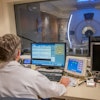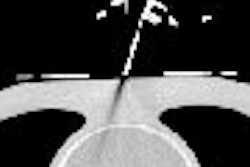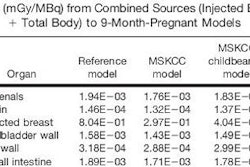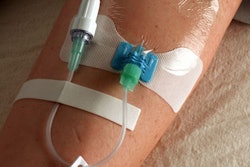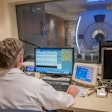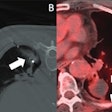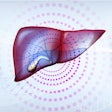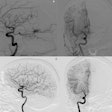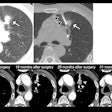Doctors are reluctant to image the heart with MRI in the days immediately following stent implantation, fearing that the newly implanted low-carbon stainless-steel devices could twist, turn, or warm inside the scanner and increase patient risks.
To be sure, scanner and stent manufacturers advise against imaging the commonly used, weakly ferromagnetic implants until at least eight weeks postsurgery. Experience with imaging drug-eluting stents, in particular, is lacking.
There are also concerns that even minute motion or heating of stents due to early MR imaging could predispose patients to early stent thrombosis, and as a result, increased morbidity and mortality. But fears over MR use in such cases may be unfounded, according to a new study from Duke University Medical Center in Durham, NC.
"This (industry) recommendation is based on the concept that the risk of stent displacement is minimized if complete endothelialization has occurred at the site of stent implantation; endothelialization should occur by eight weeks after stent placement," explained Drs. Manesh Patel, Timothy Albert, David Kandzari, and colleagues in the September issue of Radiology.
"However, no data exist to support the notion that endothelialization prevents stent displacement or that stent movement can occur before endothelialization," they wrote. "Alternatively, studies with animal models involving a variety of commercially available coronary stents have demonstrated no evidence of displacement, distortion, or substantial warming ... with standard MR imaging (Radiology, September 2006, Vol. 240:3, pp. 674-680).
The study examined 66 patients with both ST-segment-elevated myocardial infarction and non-ST-segment elevation who underwent imaging a median of three days after implantation of coronary stents (n = 97, 38 of which were drug-eluting), with follow-up at 30 days and six months.
Eight of nine stent types were made of weakly magnetic low-carbon stainless steel, composed mostly of iron with 18% chromium, 14% nickel, 2.9% molybdenum, 2% manganese, 0.75% silicon, and 0.03% carbon, according to the authors. There are nonferromagnetic stents made of cobalt, nitinol, or platinum, but a large majority of implanted stents consist of the low-carbon stainless steel.
A control group of 124 acute myocardial infarction (AMI) patients matched for age, sex, myocardial infarction type, and disease extent at stent implantation was identified from the hospital database that did not undergo early MR imaging, and the results were compared between the two groups. The prevalence of cardiac risk factors was similar in the two groups, and patients must have survived four days after the procedure to be included in the control group. Drug-eluting stents were more common in the early MR imaging group than in the controls (39% versus 10.7%, p < 0.001).
All patients underwent cine, perfusion, and myocardial viability exams on a 1.5-tesla scanner (Sonata, Siemens Medical Solutions, Malvern, PA). Cine images were acquired in short-axis planes at 1-cm intervals, and in two long-axis planes using a steady-state free-precession sequence and a flip angle of 60˚ to 70˚. A gradient-recalled-echo sequence and a flip angle of 10˚ to 15˚ were used for perfusion imaging. Myocardial viability images were acquired with both a single-shot inversion-recovery steady-state free-precession sequence with a flip angle of 45˚ and a breath-hold segmented gradient-recalled-echo sequence with a flip angle of 20˚. The contrast agent gadoversetamide (OptiMark, Mallinckrodt, St. Louis) was administered at 0.15 mmol/kg of body weight before the perfusion and viability sequences, the authors noted.
Standard cardiac catheterization and angiography were performed, with stenosis graded based on percentage of occlusion; coronary artery disease was characterized as single-vessel or multivessel.
The results showed "no significant (p = 0.13) difference in the combined end point of death, nonfatal myocardial infarction, or revascularization between the study (2.0% [95% confidence interval: 0.0%, 4.5%]) and control (6.5% [95% confidence interval: 1.6%, 11.3%]) groups at 30-day follow-up," Patel and his colleagues wrote.
At the six-month follow-up, event-free survival was 91% in the study group and 83.7% in the control group. Considering each of the end points separately, there was no difference in the event rate at either 30-day or six-month follow-up between the groups, they stated.
"These data add to the available literature pertaining to the safety of MR imaging in patients with coronary stents," the group wrote. In two previous studies in which MRI was performed early in small groups of patients (at 18 days and three days postimplantation), very low rates of adverse events were seen (Kramer et al, Journal of the American College of Cardiology, October 1, 2003, Vol. 42:7, pp. 1295-1298; Kramer et al, Journal of Cardiovascular Magnetic Resonance, 2000, Vol. 2:4, pp. 257-261).
These studies, however, were conducted before the widespread use of drug-eluting stents. Careful study is required due to rapid growth in the use of these stents, including in AMI patients, the authors noted.
"This is important because of the theoretical risk associated with delayed stent endothelialization," they wrote. "In fact, reports of subacute and delayed stent thrombosis with drug-eluting stents have led to careful long-term evaluation of risks associated with drug-eluting stents and recommendations for prolonged thienopyridine therapy. In our study, there were no clinical events in any of the patients with drug-eluting stents who underwent MR imaging...."
As a potential limitation of the study, routine angiography was not performed at 30 days to exclude subclinical stent thrombosis or restenosis. However, the incidence of this is rare, and the clinical importance unknown, the authors stated. They emphasized that the results could not be extrapolated to higher field strength scanners.
"Cardiac MR imaging performed shortly after AMI and implantation of either bare metal or drug-eluting stents appears to be safe for the stent types and pulse sequences we tested with a clinical imager and 1.5-tesla field strength," they concluded.
By Eric Barnes
AuntMinnie.com staff writer
October 2, 2006
Related Reading
Drug-eluting stents beneficial for treatment of acute MI, September 14, 2006
Study urged to assess late thrombosis risk with drug-eluting stents, September 12, 2006
Drug-eluting stents perform best in small coronary lesions, September 6, 2006
Patients with AMI have multiple unstable carotid plaques, September 15, 2006
MDCT complements MR in heart disease evaluation, August 22, 2006
Copyright © 2006 AuntMinnie.com
